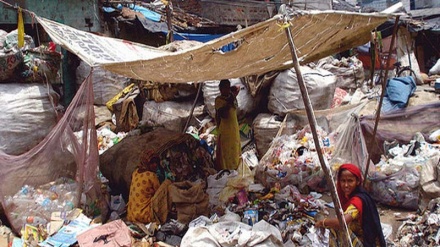We only have one planet to live on (15)
Welcome to the 15th weekly episode of the series We Only Have One Planet to Live On. In this episode we will study the destructive process of desertification.
Previously, we spoke of the importance of soil in human life and the environment, and the factors behind the destruction of soil. It was also said that the consequences of soil erosion will be studied. One of the repercussions of soil erosion is desertification.
Desertification is an unwanted phenomenon which emerges as the result of man’s inappropriate and wrong conduct. Desertification is the consequence of soil erosion in dry, semi-dry, and low-humidity regions, and a number of factors such as climate change and human activities. Today, environmentalists believe that climate change, shortage of fresh water, and desertification threaten the global environment.
Meanwhile, currently, more than half of the fertile global lands are exposed to the unwanted phenomenon of desertification, and this phenomenon has directly endangered the lives of more than 250 million people in the world. According to UN estimations, roughly 2 billion people from more than a hundred countries, across the globe, have been indirectly impacted by this unwanted phenomenon; the majority of which are developing and poor countries.
Desertification leads to loss of food security and spread of famine and ailments, in addition to forcing many to reside in cities’ outskirts, and to migrate to other countries. Based on recent estimations, only in the African Sub-Saharan region, sixty million people will be displaced in the near future, and will be forced to migrate to North Africa, and European countries due to the desertification process. Although African countries have been hit the hardest by desertification, this problem exists in other countries, too.
More than 30% of lands are exposed to desertification in the US. Also, one fourth of Latin American and Caribbean nations are exposed to this unwanted phenomenon. Moreover, one fifth of lands in Spain are exposed to desertification. The situation in the Northern Hemisphere continues to worsen day by day via emergence of intense drought in the US and shortage of water in South Europe. In China, as of the 1950s to this date, running sand has dealt a blow against nearly 700,000 hectares of farmlands, over 2 million hectares of meadows, and roughly 6 million hectares of forests.
The UN Chief, Ban Ki Moon, in a message in the year 2014, noted that soil erosion and desertification has mounted due to a number of factors such as climate change, threatening the livelihood of humans, and endangering global peace and security.
According to UN chief, desertification has led to instability of food prices, and collective displacements.
One of the main factors behind desertification is climate change. The climate change has mounted due to further emission of greenhouse gases, leaving a detrimental impact on dry lands, because such conditions lead to irregular and intermittent rainfalls, causing the reduction of water in soil. Furthermore, climate change leads to a rise in temperature, thereby exacerbating the desertification process.
For example, recent studies which have been carried out in Mongolia, reveal that in the past forty years, the impact of climate change on this region has been three times higher than other parts of the world. For instance, temperature in Mongolia has surged by more than two degrees Celsius in the past forty years. Meanwhile, amid climate change and rising temperatures, plants have been destroyed.
In the recent decades, four human activities have escalated the desertification process, which are namely excessive utilization of soil via agricultural activities; excessive grazing of livestock, disarming lands in the face of soil erosion; deforestation which exposed the soil to climatic factors; and finally inappropriate irrigation and drainage of farmlands.
Inappropriate irrigation in Australia, Middle East, and India has saturated lands with salts. Wastage of water in traditional irrigation methods also leads to desertification, and the inappropriate policies of local governments surge this problem. Although construction of dams and excavation of deep wells promote agricultural sector in the short run, they usually lead to dryness of lakes and marshlands and desertification, in the long run.
One of the other causes of soil erosion is excessive grazing of livestock. Within the framework of traditional animal husbandry, the excessive grazing of livestock swiftly destructs meadows and plants, in turn leading to desertification. This fact has been confirmed by a research institute in the US, which has released a report in this regard. This report puts emphasis on the major contribution of excessive grazing of livestock to desertification. The report also points out that desertification reduces the existing plants, that in turn reduces the ability of soil to absorb carbon dioxide.
One of the other factors that cause desertification is deforestation. In the deforestation process, forested regions are wiped out due to construction of roads, arson attacks, and tree-cutting. In fact, every year, 15 million hectares of forested regions in the world are destructed. This is a major problem which has generated the concern of environmentalists. In the case of continuation of deforestation process, worldwide, more than 170 million hectares of forests will be wiped out by the year 2030.
The destruction of soil also pollutes rivers and oceans.
MR/SS


